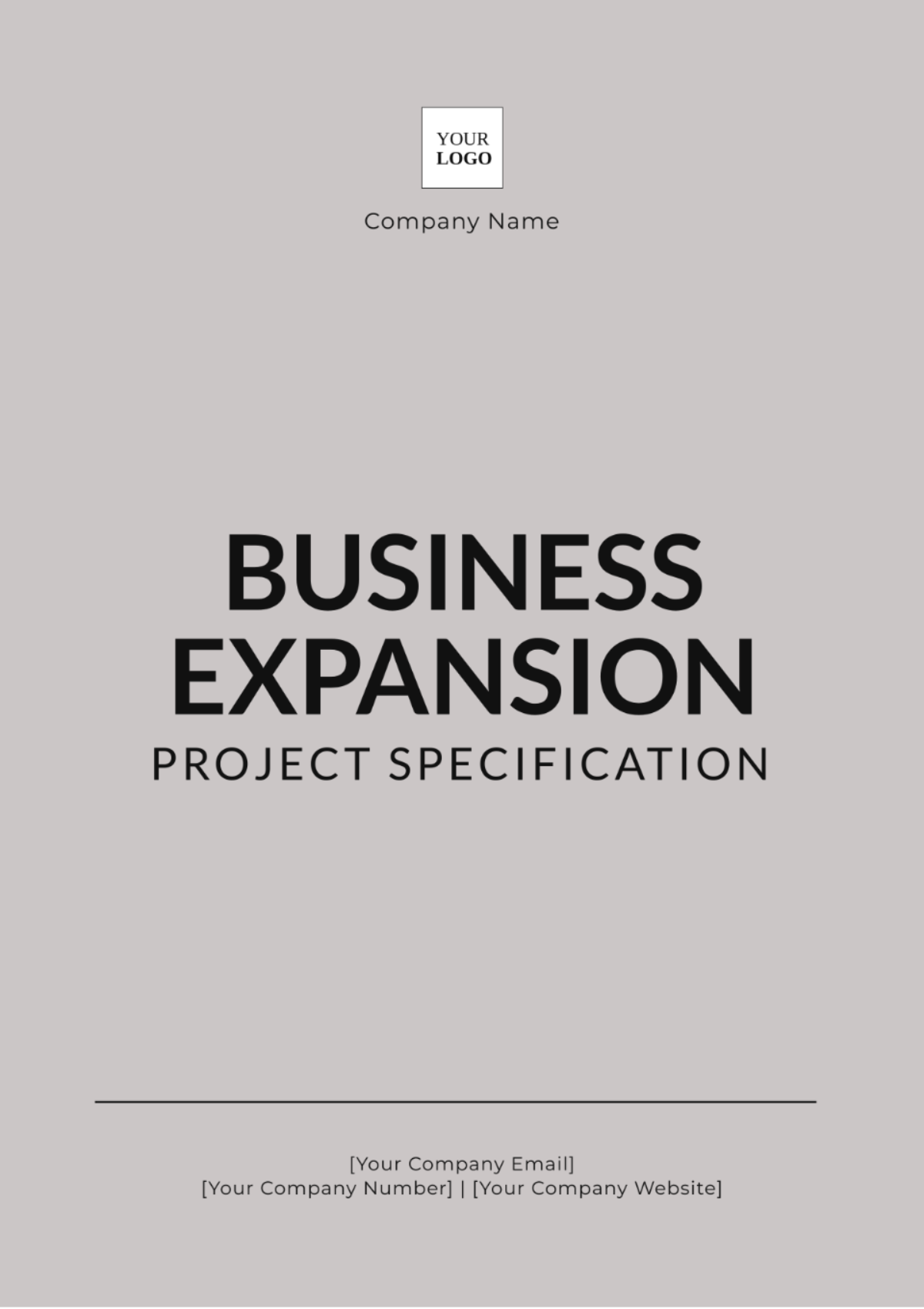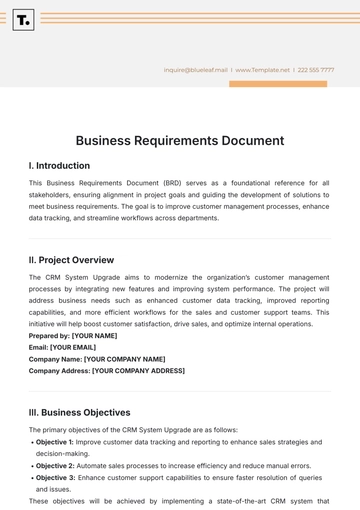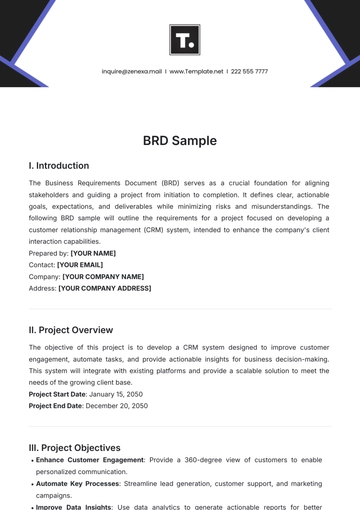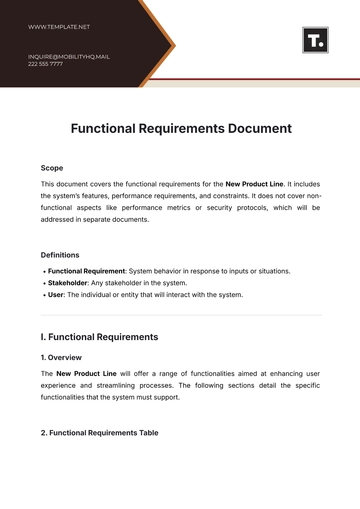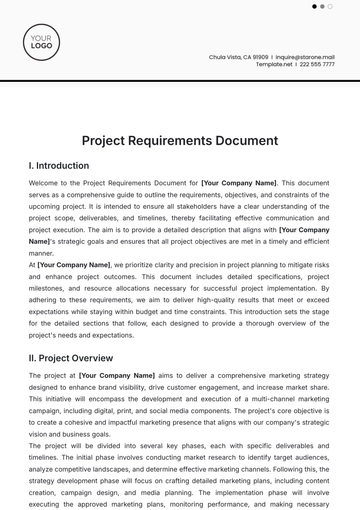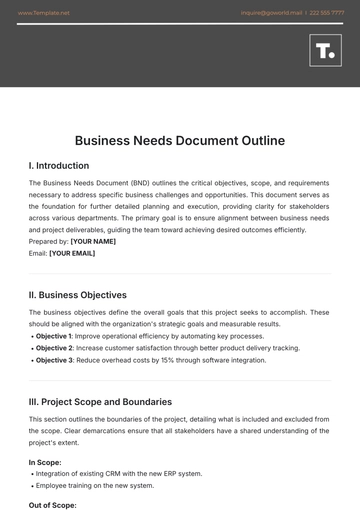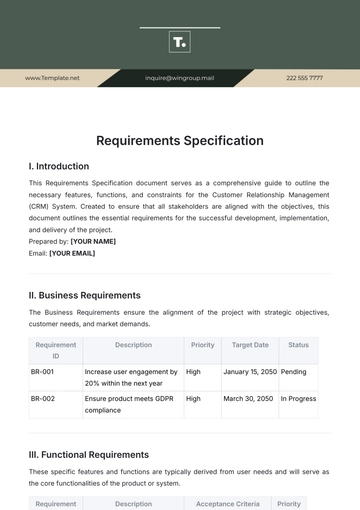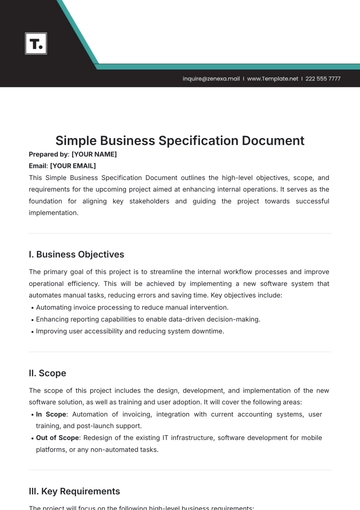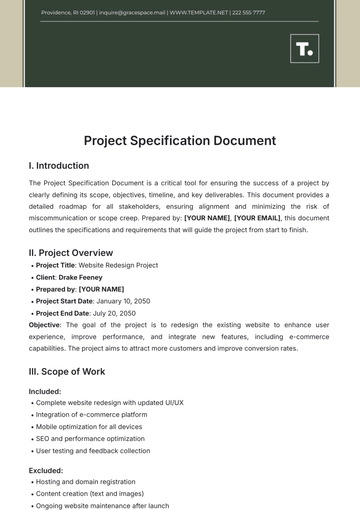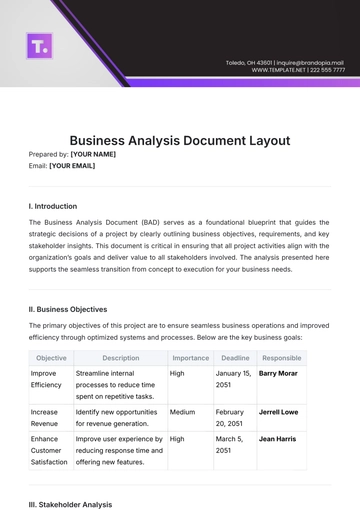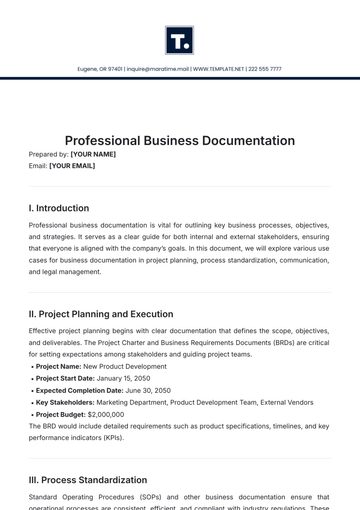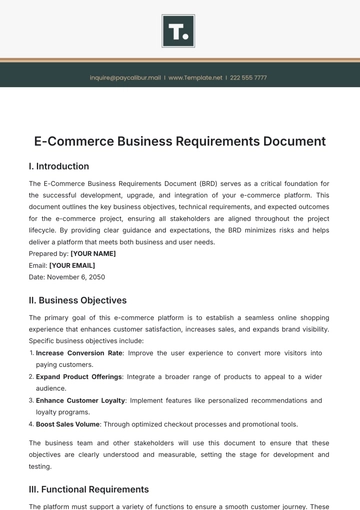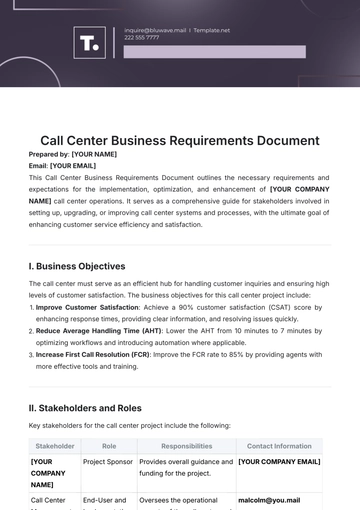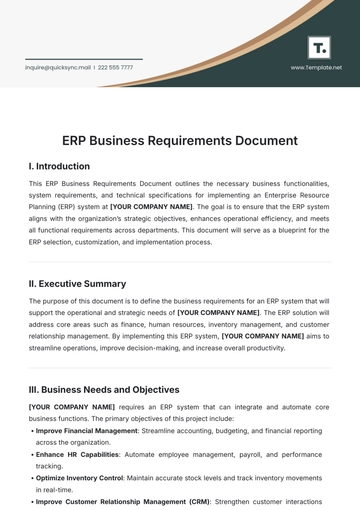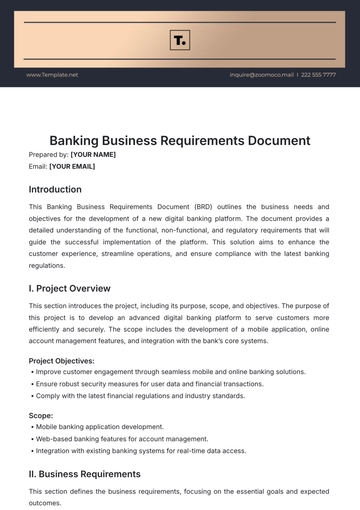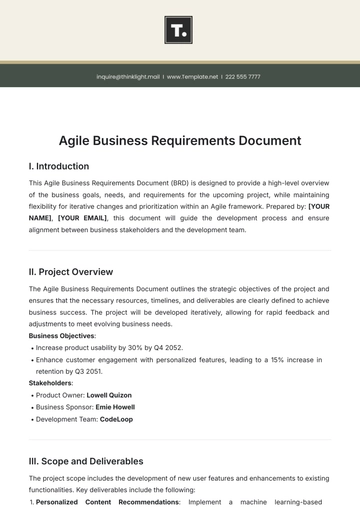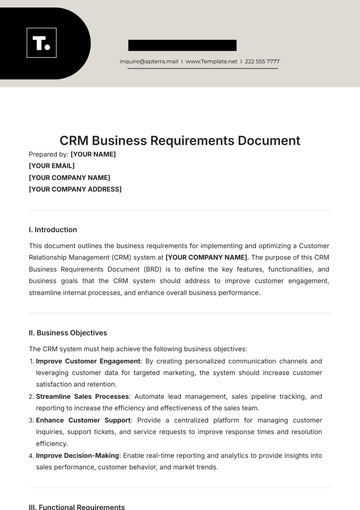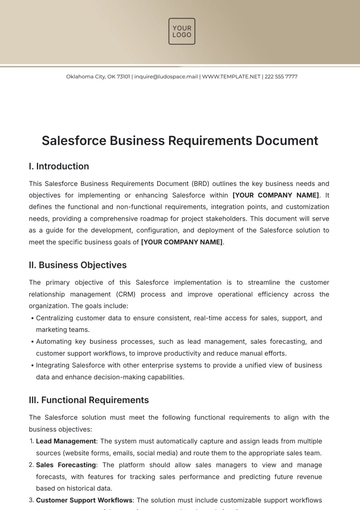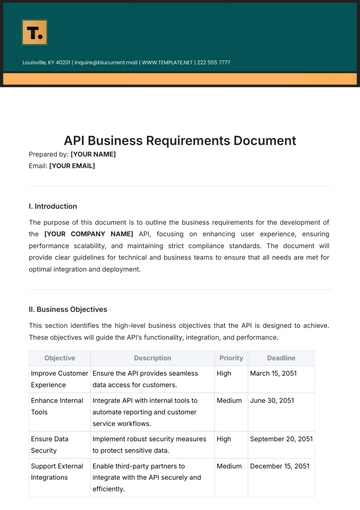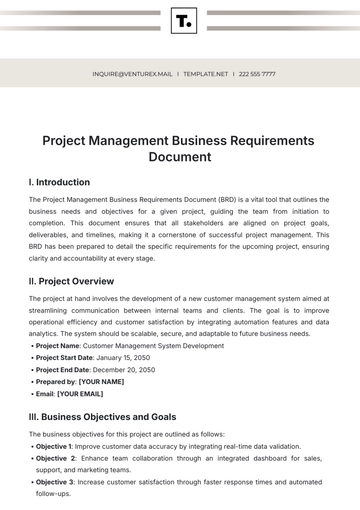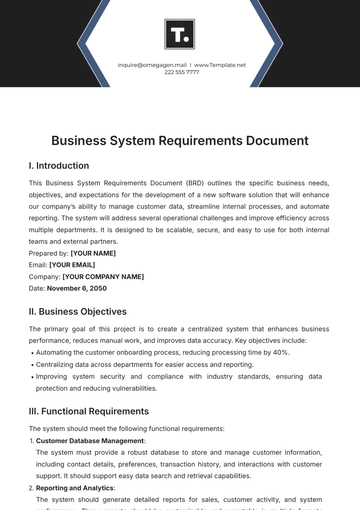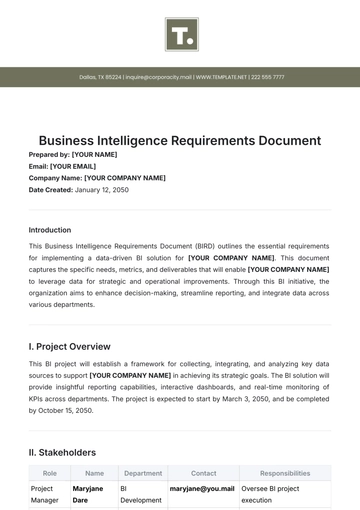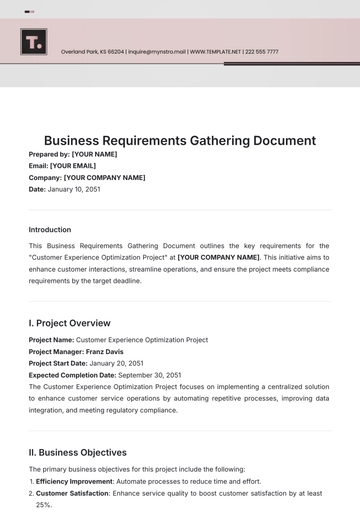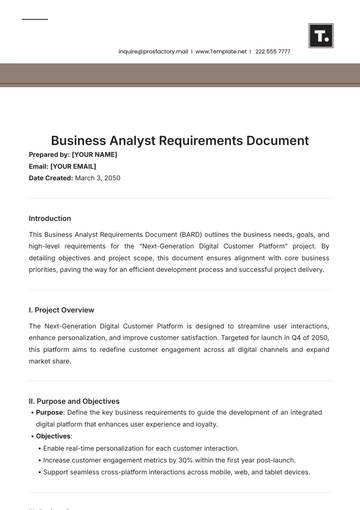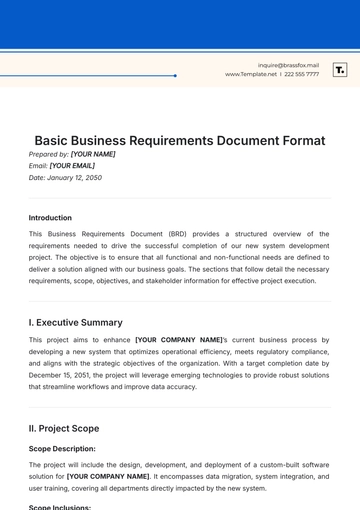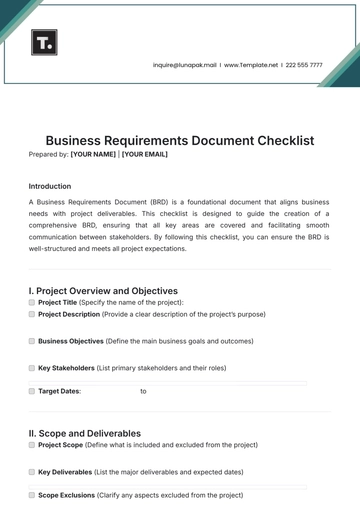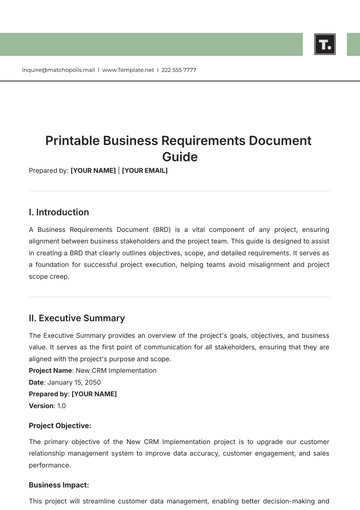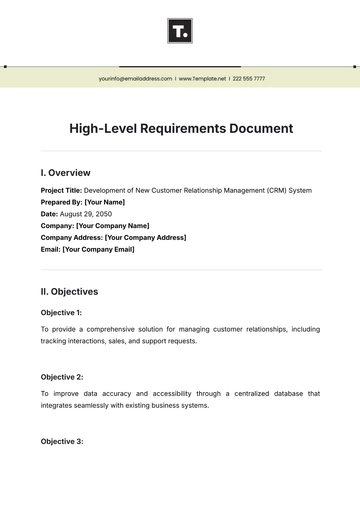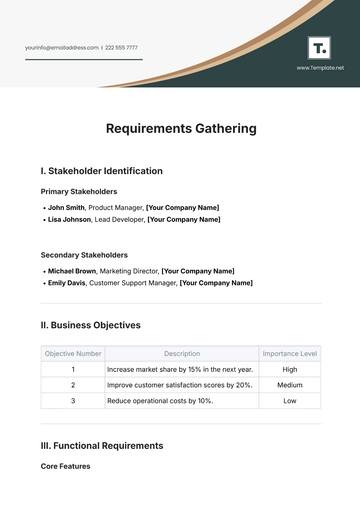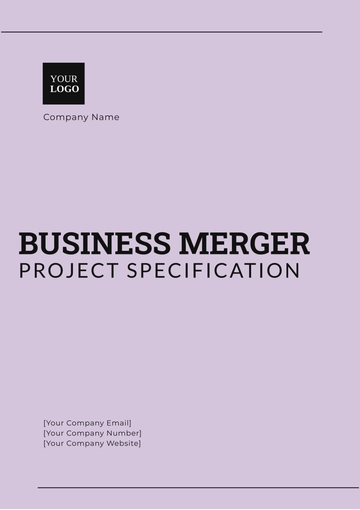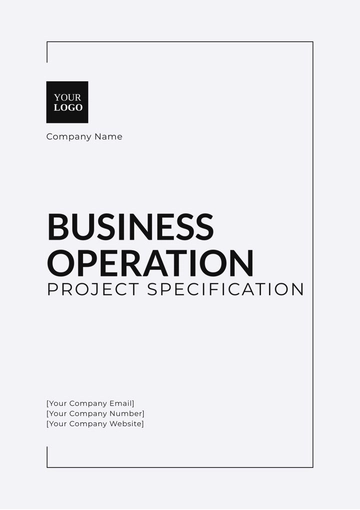Business Expansion Project Specification
Prepared By: [YOUR NAME]
Date: [DATE]
I. Executive Summary
This Business Expansion Project aims to strategically grow our company by entering new markets, launching innovative products and services, increasing production capacity, and scaling existing operations. Our objective is to achieve sustainable growth, enhance market presence, and increase profitability. The project is expected to culminate in increased market share, revenue growth, and a strong competitive position.
II. Project Objectives
Product Launch: Introduce and integrate two new product lines next year, covering development, testing, and rollout.
III. Scope of Work
Market Research: Perform an in-depth analysis to pinpoint and assess new market opportunities, including competitor analysis, consumer behavior, and market trends.
Marketing and Sales Strategy: Create and execute comprehensive strategies for market entry and growth, focusing on effective brand positioning, customer acquisition, and sales optimization.
Limitations
IV. Market Analysis
A. Target Audience
Our expansion aims at mid-sized technology companies in North America and Europe, particularly IT departments and business units striving to improve operational efficiency with innovative tech solutions, typically earning $10 million to $500 million annually and having 50 to 500 employees. Additionally, we target small and medium-sized enterprises (SMEs) seeking affordable scaling options.
B. Competitors
These established competitors provide a similar product range, benefit from strong brand recognition, and have extensive customer bases, making market entry significantly challenging.
C. Potential Challenges
V. Business Case
VI. Project Plan
Phase | Milestones | Timeline |
|---|
Market Research | Complete market analysis | January 2050 - June 2050 |
Product Development | Launch new products | July 2050 - December 2050 |
Production Scaling | Expand facilities | January 2051 - September 2051 |
Market Entry | Establish market presence | October 2051 - March 2052 |
VII. Resource Requirements
A. Personnel
Product Developers: To design, develop, and refine new products, ensuring they meet market demands and align with business goals.
B. Equipment
C. Budget
Initial Allocation: $5 million was allocated for the first phase, covering personnel, equipment, and operational expenses. This budget supports market research, product development, facility expansion, and initial marketing efforts, ensuring a strong foundation for the project’s success.
VIII. Risk Management
IX. Stakeholder and Communication Plan
A. Key Stakeholders
Investors: The main investors, focused on the project's ROI and progress, are keen to know how their money is being used and its effect on the project's development, while keeping an eye on achieving the desired goals.
Customers: Early adopters, including both individuals and organizations, along with key clients who are pivotal in the market, will use these new products and offer important feedback from their experiences.
B. Communication Strategy
X. Implementation and Monitoring Plan
Phase | Activities | Timeline |
|---|
Phase 1 | Initiate market research and feasibility studies | January 2050 - June 2050 |
Phase 2 | Commence product development | July 2050 - December 2050 |
Phase 3 | Scale production capabilities and train new personnel | January 2051 - September 2051 |
Phase 4 | Launch marketing campaigns and enter new markets | October 2051 - March 2052 |
Metrics for Success
Project Specification Templates @ Template.net
